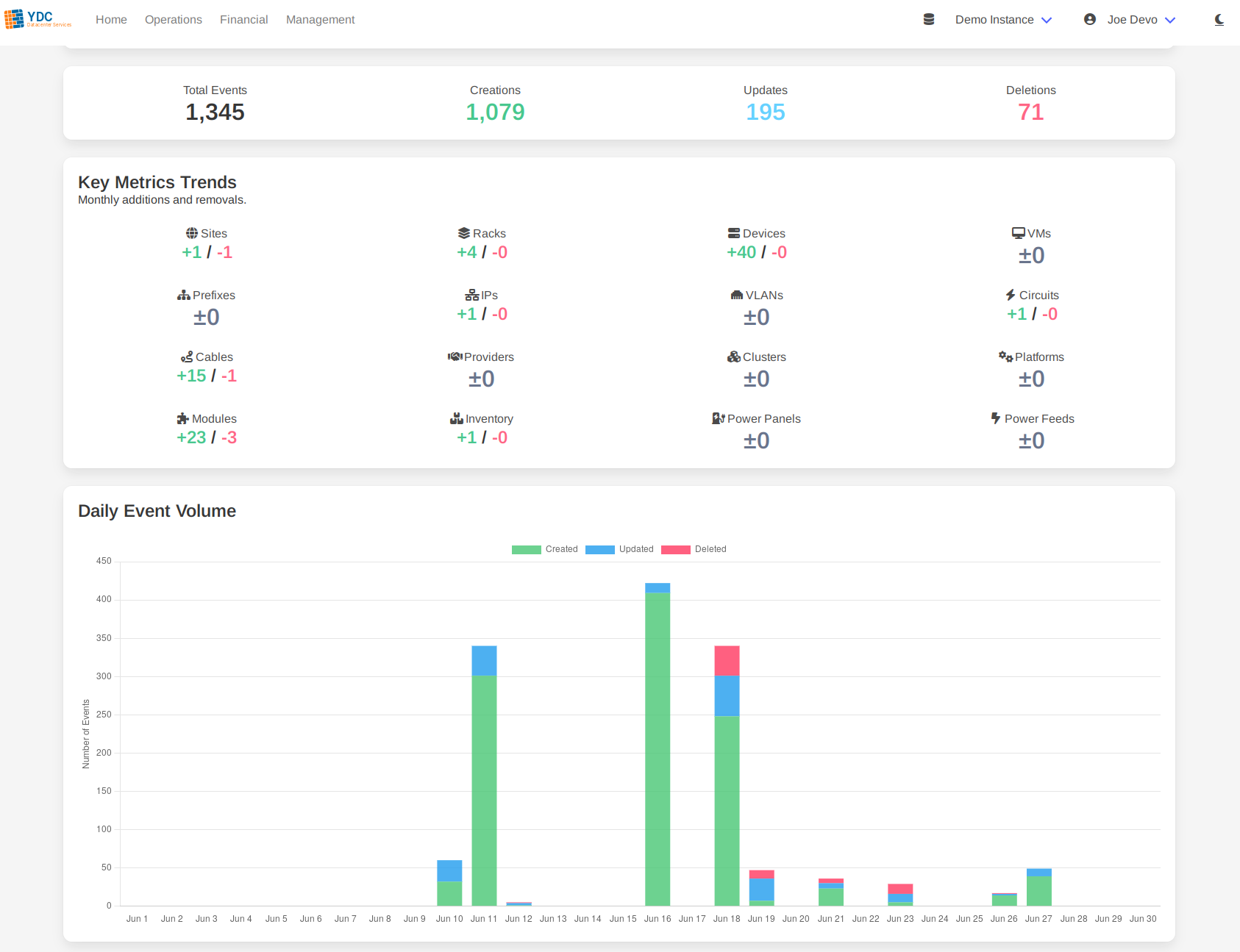Monthly Reporting
Feature: Monthly Reporting
The Monthly Reporting tool generates a comprehensive, one-page summary of all activity within your Netbox instance for a selected calendar month. It’s designed to give managers and team leads a clear, visual overview of infrastructure changes and growth without needing to write custom scripts or manually parse logs.
How to Generate a Report
-
Select a Report Period: Use the dropdown menus to choose the desired month and year. The available dates are automatically determined by the age of your Netbox changelog data.

-
Load Report: Click the Load Report button. The tool will begin fetching and processing all changelog events for the entire selected month. A progress bar will show the status, as this may take a moment for highly active instances.
-
View the Report: The full report is displayed on the page, broken down into several visual sections for easy interpretation.
-
Export to PDF: Click the Export PDF button to generate a clean, professional PDF of the on-screen report. This is perfect for sharing with stakeholders, archiving, or including in presentations.
Understanding the Report Sections
The report is designed to be easily digestible and provides multiple perspectives on your data.

- Overall Stats: A high-level summary of the total number of events, broken down into creations, updates, and deletions for the month.
- Key Metrics Trends: A visual summary showing the net change (additions vs. deletions) for your most important asset types, such as Devices, Racks, VMs, and Prefixes. This gives a clear picture of growth or consolidation.
- Daily Event Volume Chart: A bar chart that visualizes the volume of activity for each day of the month, helping you identify peak periods of change or maintenance windows.
- Summary Tables:
- Top Changed Object Types: Highlights which parts of your data model are seeing the most activity.
- Most Active Users: Shows which team members are making the most changes.
- Asset Changes by Category: A detailed table breaking down the create, update, and delete actions for each major asset category.